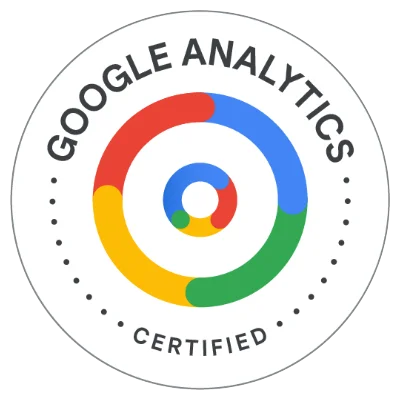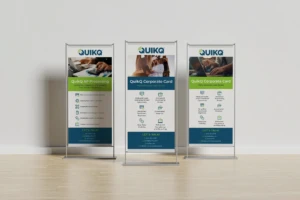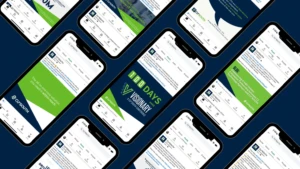You’ve Found Yourself In the Middle of a Pandemic.
Empty streets, empty schools, empty bars, empty grocery stores. We are living through a very strange and uncertain time in our country, to say the least.
And for many of us who run businesses or brands, this coronavirus (COVID-19) outbreak is uncharted territory. There isn’t really a precedent; no how-to manual on how to help our organizations, or our customers, navigate through something like this successfully.
But there are two things I can tell you with utmost certainty:
- We are going to get through this together, and
- We are currently spending a staggering amount of time online
Recently, Internet traffic jumped 30 percent in Italy, and it’s up 8-10 percent in South Korea and parts of the United States. We usually hit peak Internet usage on Sunday nights, but because of self-sheltering and the number of people working from home, peak usage is now 11:30 a.m. on weekdays.
So, what does this mean for your brand? With so many consumers seeking a break from their harsh realities, this is a good opportunity to provide them crucial information and maybe even a little comfort. Here’s how:
1. Is Your Crisis Communication Up to Speed?
Unfortunately, the coronavirus serves as a reminder to make sure you have your crisis communication ducks in a row. First thing’s first: before you think about releasing internal and external crisis messaging, make sure you establish a team, or a go-to contact, responsible for disseminating crisis communication and answering questions. It helps maintain messaging consistency if your communication is coming from the same source each time.
Next, identify internal and external stakeholders who need to receive your messaging first. You will need to tailor your messaging based on this list, especially in regard to internal versus external messaging.
Finally, begin crafting your messages. Crisis communication should be truthful, accurate and empathetic. You want to remain professional while explaining the who, what, when, where and why of the crisis, but don’t be afraid to make the tone of your messaging one of compassion and courtesy. In the case of coronavirus, a sense of unity can go a long way. Ending your message with something like, “Together, we will get through this” adds a sense of reassurance and optimism.
Overall, you’ll want to keep your messaging simple. As mentioned above, you’ll need to craft messaging specific to different internal and external stakeholders, but you’ll also need craft several variations of your message depending on the medium. For example, a written statement for the media will be vastly different than one written specifically for social media.
2. Create Useful Content
In the world of digital marketing, content is king. And with everyone currently congregating online more than usual, now is the perfect time to deliver helpful content to a captivated audience that is craving it.
Take this opportunity to publish videos, blog posts, articles, etc., that will help your customers in some way. For example, if you’re a payments company, this is a great time to write an article highlighting the companies banding together to waive late payments and extend service for those who are financially affected by the coronavirus. Or, if event planning is your business, write an article with tips for executing the perfect remote meeting in less-than-ideal conditions.
Once it’s ready, share your content in an email to customers and prospects. If you have multiple pieces, why not create a small email campaign that will help your customers? And if you really want to promote conversation with your customers, share your content on social media and do your part to form positive connections with users.
Knowledge is power, and your customers will appreciate your efforts in making their lives a little easier during this time.
3. Use Social the Right Way
Since we are all spending more time online during the coronavirus outbreak, it stands to reason that social media usage wound increase exponentially.
Influencer agency Obviously analyzed 260 of their own campaigns, and found a 76 percent increase in daily accumulated likes on Instagram ad posts over the last two weeks. With so many people engaging on social media, it seems like a great time to run your normal ad campaigns and promoted posts, right?
Wrong.
Selling to consumers who may be emotional or fearful with everything going on will come off as shallow and tone deaf. Instead, use your social media networks as tools for good. As mentioned above, use social as a way to share content that helps put consumers at ease, provides information or answers their questions before they ask them.
Also, make sure you’re offering the best possible customer service on all social media platforms. If a customer asks you a question on Twitter, make sure to respond as soon as possible. There isn’t an excuse not to be completely responsive with the way things are right now.
We’re Here to Help
It’s entirely possible that this crisis won’t go away for another several weeks, or even months. How you respond and interact with consumers will have a huge effect on the future of your brand. For more information on dealing with the coronavirus outbreak, or if you need some help dealing with the craziness, connect with us! We’re be happy to help you navigate through this.
Kedran Brush, Brand825’s Co-Founder and CEO, has more than 28 years of marketing leadership experience at the SVP and CMO levels, including revenue growth, customer satisfaction, brand awareness, etc. When she’s not helping brands be their best, Kedran can be found relaxing on the lake, at Tennessee Titans games and trying to stop her dog from chasing the elusive neighborhood squirrel.











